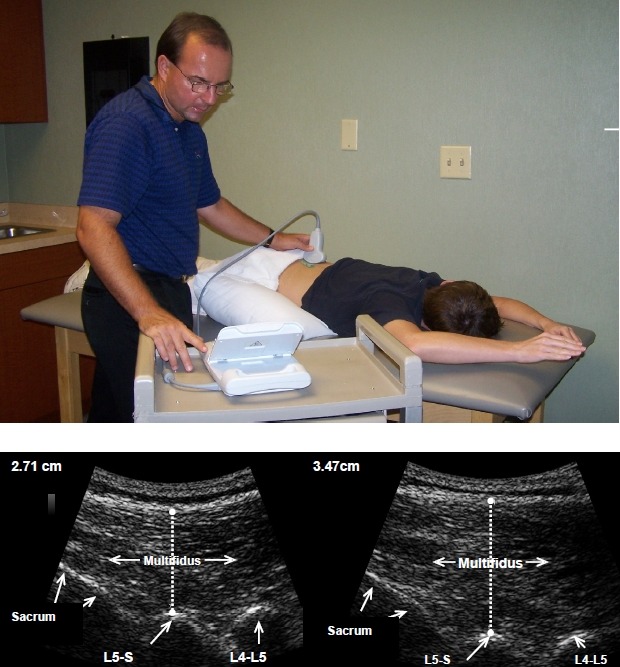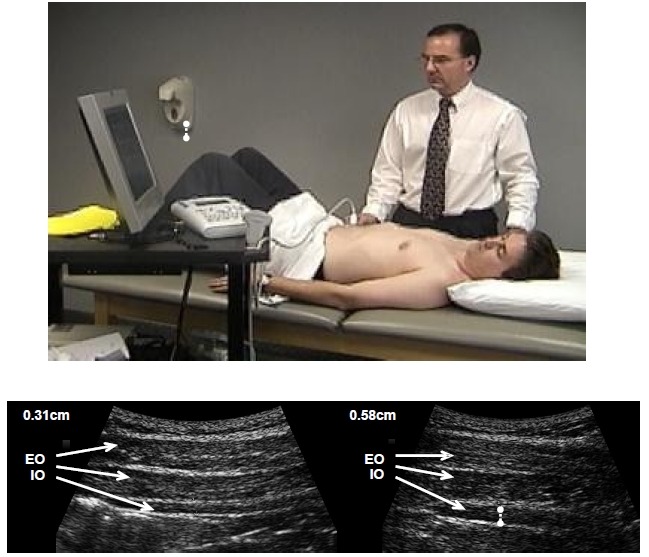INTRODUCTION: Many studies have shown that spine stabilisation exercises elicit improvements in symptoms/disability in patients with chronic non‐specific low back pain (cLBP). However, none have corroborated the intended mechanism of action by examining whether these clinical improvements 1) are greater in patients with “dysfunction” of the muscles targeted by the exercises, or 2) correlate with post‐treatment improvements in muscle activation.
Methods: Pre and post‐therapy, 32 cLBP patients (44.0±12.3 y) rated their LBP intensity (0‐10) and disability (0‐24, Roland‐Morris; RM); thicknesses of transversus abdominis (TrA), obliquus internus (OI) and obliquus externus (OE) were determined at rest and during “abdominal‐hollowing” using M‐mode ultrasound. The TrA‐contraction ratio (TrA‐CR; thickness contracted/rest) and TrA‐preferential activation (TrA‐PA; TrA proportion of whole TrA+OI+OE thickness when contracted minus same at rest) were determined.
RESULTS: RM decreased from 8.9±4.7 to 6.7±4.3, and average pain, from 4.7±1.7 to 3.5±2.3 (each p<0.01). TrA‐CR increased from 1.35±0.12 to 1.41±0.17 (p=0.06) and TrA‐PA, from 0.051±0.018 to 0.056±0.025 (p=0.16). There was a non‐significant tendency (r=‐0.31,p=0.09) for worse baseline TrA‐PA to be associated with greater improvements in RM (but not pain). The individual improvements in RM/pain did not correlate significantly with the changes in either TrA‐CR or TrA‐PA (r=‐0.06‐0.20;p>0.27), though patients achieving a (clinically relevant) ≥30% reduction in RM tended to show greater improvement in TrA‐PA than did those with <30% reduction (0.013±0.023 vs 0.001±0.022, respectively;p=0.16).
CONCLUSION: There was some suggestion that patients with worse TrA function benefited more from the treatment. However, a good clinical outcome was not strongly dependent upon corresponding changes in abdominal muscle function. It is hence difficult to attribute the therapeutic results to any specific effects of the exercises on the trunk muscles. Larger groups of patients should be examined to clarify whether stabilisation exercises simultaneously have some sort of “global/general” effect, unrelated to abdominal muscle function.


